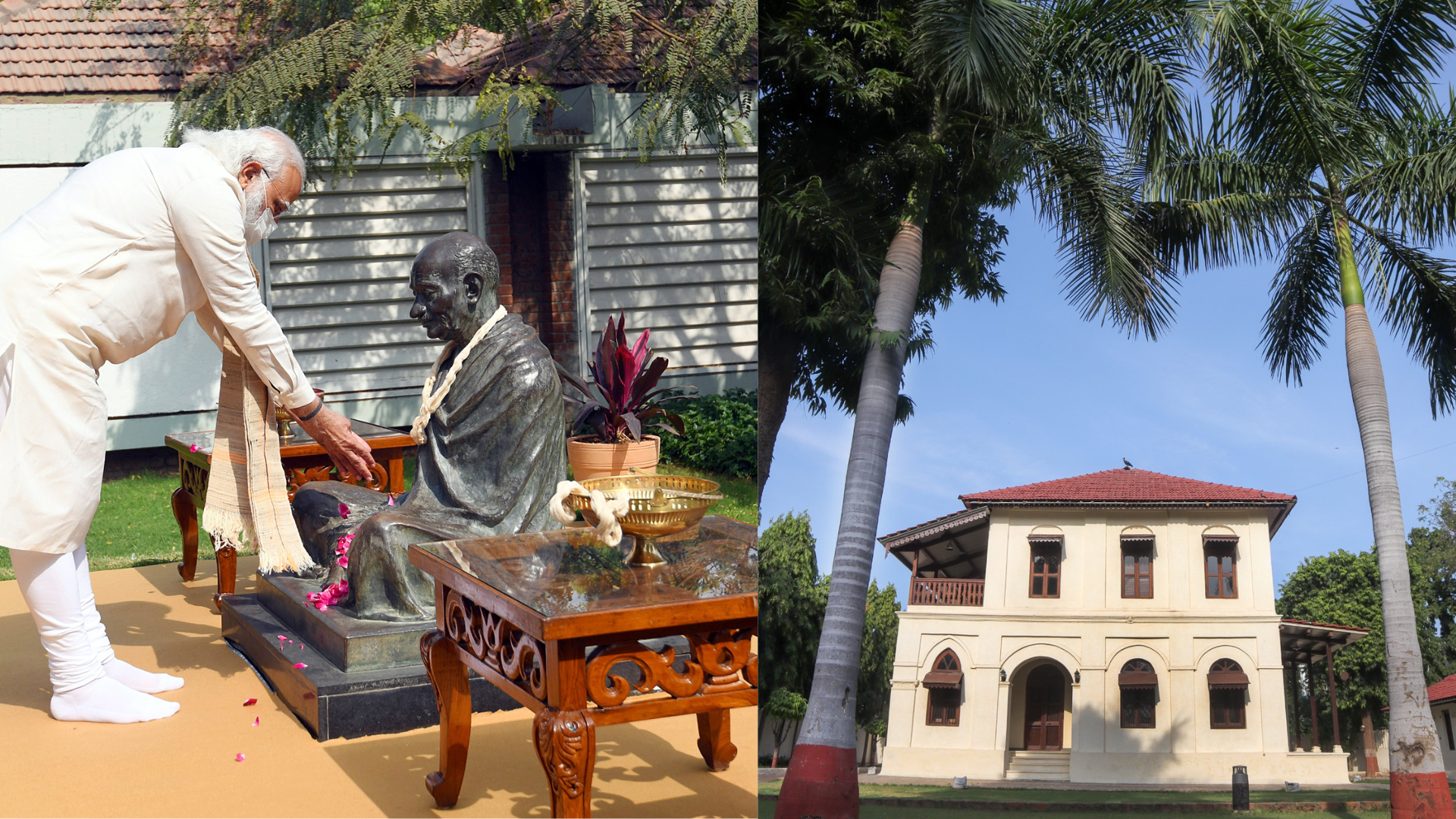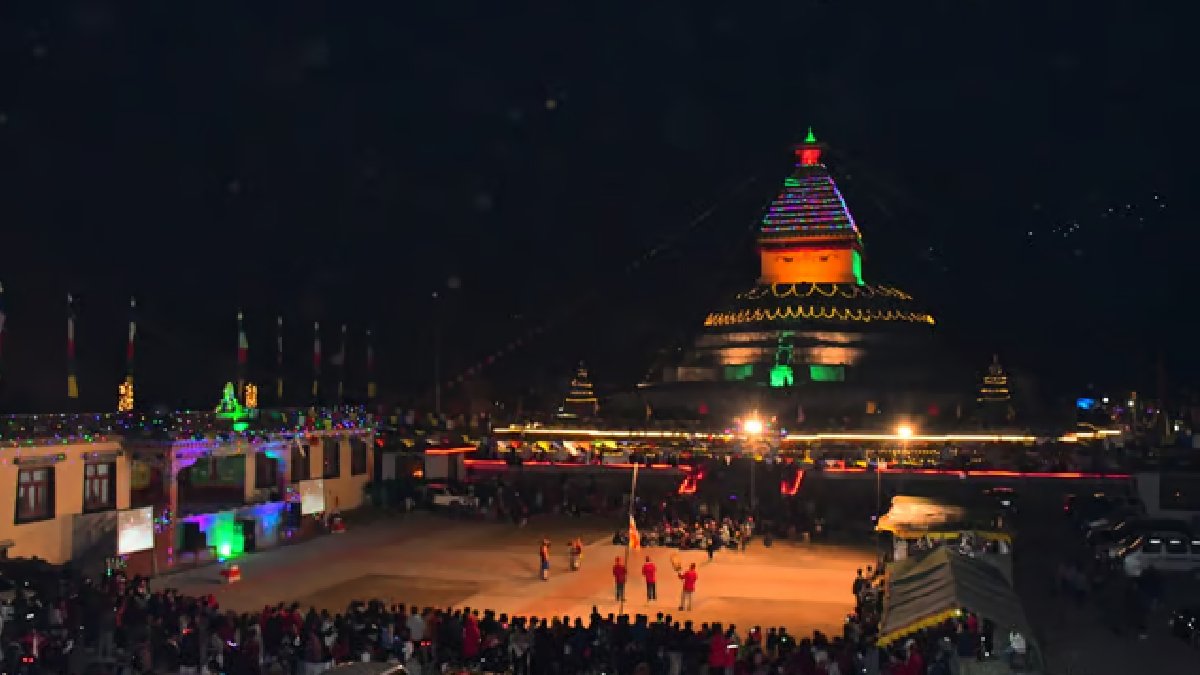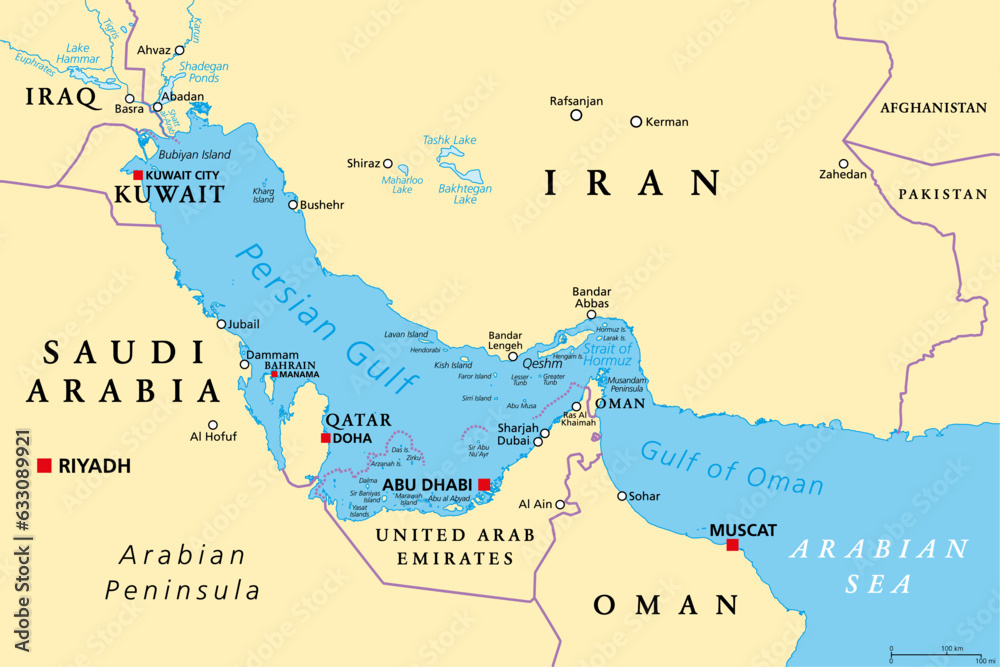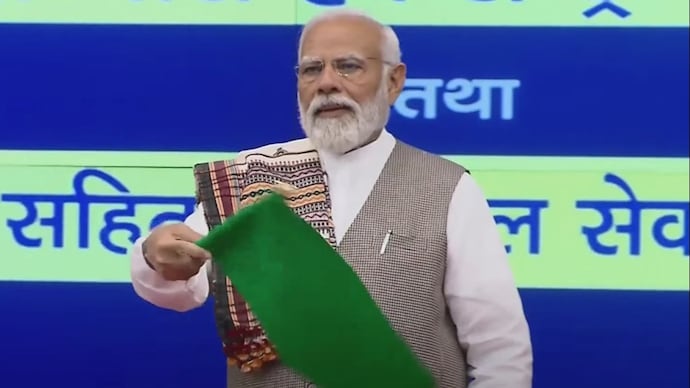Current Affairs – 13 March 2024
Graphics Processing Unit
As the world rushes to make use of the latest wave of AI technologies, one piece of high-tech hardware has become a surprisingly hot commodity: the graphics processing unit, or GPU.

About Graphics Processing Unit:
- It is a computer chip that renders graphics and images by performing rapid mathematical calculations. GPUs are used for both professional and personal computing. Originally, GPUs were responsible for the rendering of 2D and 3D images, animations and video.
- Like a central processing unit (CPU), a GPU is also a chip component in computing devices. One important difference, though, is that the GPU is specifically designed to handle and accelerate graphics workloads and display graphics content on a device such as a PC or smartphone.
- A typical modern CPU is made up of between 8 and 16 “cores”, each of which can process complex tasks in a sequential manner.
- GPUs, on the other hand, have thousands of relatively small cores, which are designed to all work at the same time (“in parallel”) to achieve fast overall processing.
- This makes them well suited for tasks that require a large number of simple operations which can be done at the same time, rather than one after another.
How does a GPU work?
- GPUs work by using a method called parallel processing, where multiple processors handle separate parts of a single task.
- A GPU will also have its own RAM to store the data it is processing. This RAM is designed specifically to hold the large amounts of information coming into the GPU for highly intensive graphics use cases.
- For graphics applications, the CPU sends instructions to the GPU for drawing the graphics content on screen.
- The GPU executes the instructions in parallel and at high speeds to display the content on the device — a process known as the graphics or rendering pipeline.
Applications
- GPUs are now used for creative content production, video editing, high performance computing (HPC) and artificial intelligence (AI).
- GPUs were developed as a way to offload those tasks from CPUs for graphics applications.
- It performs graphics-related calculations very quickly and in parallel to allow for fast and smooth rendering of content on the computer screen.
Exercise ‘Bharat Shakti’
The Prime Minister recently witnessed the tri-service exercise ‘Bharat Shakti’ in Pokhran, Rajasthan.

About Exercise ‘Bharat Shakti’:
- It is an integrated tri-service exercise conducted at Pokhran, Rajasthan, showcasing the prowess of indigenously manufactured defence equipment across the three services.
- The exercise involves showcasing the calibrated tactical employment of niche technology in a tri-services environment against perceived threats.
- The exercise displays an array of indigenous weapon systems and platforms, premised on the nation’s Aatmanirbharata initiative.
- It will also simulate realistic, synergised, multi-domain operations displaying the integrated operational capabilities of the Indian armed forces to counter threats across land, air, sea, cyber, and space domains.
- It features indigenous weapon systems: T-90 (IM) Tanks, Dhanush and Sarang Gun Systems, Akash Weapons Systems, Logistics Drones, Robotic Mules.
- The Indian Navy displays Naval Anti-Ship Missiles, Autonomous Cargo Carrying Aerial Vehicles, and Expendable Aerial Targets.
- The Indian Air Force showcases indigenous aircraft: Light Combat Aircraft Tejas, Light Utility Helicopters, and Advanced Light Helicopters.
Directorate General of Foreign Trade
The Directorate General of Foreign Trade (DGFT) has granted an exemption to the import of certain goods from quality control orders (QCOs) under the advance authorisation scheme.

About Directorate General of Foreign Trade:
- It is a government organization in India responsible for the formulation of exim guidelines and principles for Indian importers and Indian exporters of the country.
- Before 1991, DGFT was known as the Chief Controller of Imports & Exports (CCI&E). It is an attached office of the Ministry of Commerce and Industry and is headed by Director General of Foreign Trade.
- It has been assigned the role of “facilitator”. It is responsible for implementing the Foreign Trade Policy or Exim Policy with the main objective of promoting Indian exports.
- The DGFT also issues scrips/authorization to exporters and monitors their corresponding obligations through a network of 24 regional offices.
- Functions:
- To implement the Exim Policy or Foreign Trade Policy of India by introducing various schemes and guidelines through its network of dgft regional offices thought-out the country.
- To Grant Exporter Importer Code Number to Indian Exporter and Importers. IEC Number is a unique 10 digit code required by the traders or manufacturers for the purpose of import and export in India.
- It permits or regulate Transit of Goods from India or to countries adjacent to India in accordance with the bilateral treaties between India and other countries.
- To promote trade with neighboring countries.
- To grant the permission of free export in Export Policy Schedule 2.
- Setting standard input-output norms is also controlled by the DGFT.
- Headquarter: New Delhi
Kochrab Ashram
The Prime Minister inaugurated the redeveloped Kochrab Ashram in Ahmedabad, Gujarat, recently to mark the 94th anniversary of the Dandi March.

About Kochrab Ashram:
- It was the first ashram founded by Mahatma Gandhi in 1915, following his return to India from South Africa. It is located in Kochrab village, situated on the outskirts of Ahmedabad, Gujarat.
- It was called Satyagraha Ashram based on his ideas of achieving India’s independence from British rule through peaceful methods.
- Establishment:
- Gopal Krishna Gokhale requested Mahatma Gandhi to return to India, which needed his skills as a community organizer.
- Mahatma Gandhi began his association with Ahmedabad after returning to India from South Africa. About his decision to settle in Ahmedabad in 1915, Gandhi wrote that, as a Gujarati, he should be able to serve the country best through the Gujarati language.
- On 20th of May, 1915, Gandhi began living in a bungalow in Kochrab village. The bungalow, which he soon rechristened as the Satyagraha Ashram, was given to him by his fellow lawyer and colleague, Jeevanlal Desai.
- Mahatma Gandhi based himself here for about one-and-a-half years before moving to the new campus of Sabarmati Ashram. It is a colonial-style building with a white-washed façade.
KIRTI Programme
Union Minister for Youth Affairs and Sports inaugurated the unique Khelo India Rising Talent Identification (KIRTI) programme.

About KIRTI Programme:
- It is aimed at school children between nine and 18 years age group.
- The nation-wide scheme will have two main objectives:
- To hunt talent from every nook and corner of the country and
- To use sports as a tool to curb addiction towards drugs and other gadgetry distractions.
- KIRTI aims to conduct 20 lakh assessments across the country throughout the year to identify talent through notified Talent Assessment Centres.
- KIRTI made a solid launch across 50 centres in India. Fifty thousand applicants are being assessed in the first phase across 10 sports, including athletics, boxing, wrestling, hockey, football and wrestling.
- KIRTI’s athlete-centric programme is conspicuous by its transparent selection methodology based on Information Technology.
- Data analytics based on Artificial Intelligence is being used to predict the sporting acumen in an aspiring athlete.
What is Khelo India Scheme?
- It is the flagship Central Sector Scheme of the Ministry of Youth Affairs & Sports.
- It aims at infusing sports culture and achieving sporting excellence in the country thus allowing the populace to harness the power of sports through its cross-cutting influence.
- Under the “Sports Competitions and Talent Development” vertical of the Khelo India Scheme, the “Talent Identification and Development” component is dedicated to working towards the identification and development of athletes at the grassroots and elite levels to develop the sports ecosystem in the country.
Uniform Code for Pharmaceutical Marketing Practices (UCPMP) 2024
The Central Government recently rolled out a Uniform Code for Pharmaceutical Marketing Practices (UCPMP) for pharmaceutical companies.

About UCPMP 2024:
- It has been implemented to control unethical practices in the pharma industry.
- The updated guidelines include drug endorsement, promotion, ethical conduct for medical representatives, and maintaining relationships with healthcare professionals.
- Important Provisions:
- It prohibits pharma companies from offering gifts and travel facilities to healthcare professionals or their family members.
- The UCPMP mandates that medical representatives must not employ any inducement or subterfuge to gain an interview, and they must not pay, under any guise, for access to a healthcare professional.
- It also holds companies responsible for the actions of the medical representatives.
- It also bans the supply of free samples to those who are not qualified to prescribe such a product.
- Each pharma company also needs to maintain details such as product name, doctor name, the number of samples given, date of supply of free samples to healthcare practitioners, etc., and the monetary value of samples so distributed should not exceed two percent of the company’s domestic sales per year.
- All pharmaceutical associations must constitute an Ethics Committee for Pharmaceutical Marketing Practices (ECPMP), set up a dedicated UCPMP portal on their website, and take further necessary steps towards the implementation of this Code.
- It also lists in detail how the drug should be promoted, both in texts and in the audio-visual market.
- The information about drugs must be balanced, up-to-date, and verifiable, and must not mislead either directly or by implication.
- The pharma companies should not make claims and comparisons of their drug’s usefulness, and the word “safe” must not be used without qualification.
- The word “new” must not be used to describe any drug which has been generally available or any therapeutic intervention which has been generally promoted in India for more than a year.
- The responsibility for adherence to the code rests with the Chief Executive Officer of pharmaceutical companies.
- It also detailed the penalties for violating the code and how complaints will be handled.
- Any violations of the code will be addressed by the ECPMP, ensuring accountability and oversight.
Gorsam Kora Festival
The Gorsam Kora festival, symbolised the enduring friendship between India and Bhutan commenced on 7th March and concluded on 10th March this year.

About Gorsam Kora Festival:
- It is held in Arunachal Pradesh’s Zeminthang Valley along the Nyanmjang Chu River.
- History
- This annual festival is held at Gorsam Chorten, a 93 feet tall Stupa, built during 13th century AD by a local monk- Lama Pradhar.
- This is also the place where the 14th Dalai Lama had his first rest after fleeing from Tibet in 1959.
- It features cultural performances and Buddhist rituals at the Gorsam Chorten, which is older than the Tawang Monastery.
- Many devotees including large number of Bhutanese nationals visit during Gorsam Kora festival to celebrate the virtuous occasion during the last day of the first month of the Lunar calendar.
- The festival featured a diverse array of events, including enthralling performances by local cultural troupes and by the Indian army bands, martial performances like Mallakhamb and Zanjh Pathaka.
Index of Industrial Production (IIP)
The Ministry of Statistics and Programme Implementation recently released the Quick Estimates of the Index of Industrial Production (IIP) for January 2024, revealing a growth of 3.8 percent.

About Index of Industrial Production (IIP):
- It is one of the prime indicators of economic development for the measurement of trends in the behavior of industrial production over a period of time with reference to a chosen base year.
- It is a short-term indicator measuring industrial growth until the actual result of detailed industrial surveys become available.
- It indicates the relative change in physical production in the field of industries during a specified year as compared to the previous year.
- It is computed and published by the Central Statistical Organisation (CSO), Ministry of Statistics and Programme Implementation, on a monthly basis.
- Calculation:
- The IIP is a quantum index, the production of items is expressed in physical terms. However, the unit of reporting in respect of certain items like machinery, machine tools, shipbuilding, etc. is in value terms.
- It is compiled as a simple weighted arithmetic mean of production relatives by using Laspeyre’s formula.
- In order to remove the effect of price rises from the index, the production figures of such items are deflated on the basis of Wholesale Price Indices (Base 2011-12), compiled by the Office of Economic Adviser, Ministry of Commerce and Industry, before the compilation of the index.
- Base Year:
- The base year is always given a value of 100.
- The current base year for the IIP series in India is 2011-12.
- So, if the current IIP reads as 116, it means that there has been 16% growth compared to the base year.
What is Laspeyre’s formula?
- It was proposed by German economist Étienne Laspeyres (1834–1913) for measuring current prices or quantities in relation to those of a selected base period.
- It is computed by taking the ratio of the total cost of purchasing a specified group of commodities at current prices to the cost of that same group at base-period prices and multiplying by 100.
- The base-period index number is thus 100, and periods with higher price levels have index numbers greater than 100.
Hyodol Robot
South Korean company Hyodol has come up with a way to use Artificial Intelligence (AI) to beat loneliness among elders with dementia.
Why in news?
- The South Korean government is reported to have deployed around 7,000 Hyodol dolls to keep senior citizens ‘company’ and remind them to take medications. Loneliness among senior citizens is a growing social issue in South Korea.
About Hyodol Robot:
- It is an AI care robot that offers customised care for seniors. The robot does this by relying on data collected by living and having conversations with them.
- It can hold full conversations and it comes with a companion app and web monitoring platform for caretakers to monitor remotely. Besides, it comes with safety features that can raise an alert when no movement has been detected for a certain period of time.
- It also comes with touch interaction, check-ins, a health coach, voice messages, 24-hour voice reminders, music, quizzes, exercise suggestions, and more.
- Moreover, caregivers with access to the app will be able to send and receive voice messages, make group announcements, and monitor motion detection.
- The robot also continuously monitors the health condition of its users through health Q&A two times a day. It collects verbal/nonverbal data for 24 hours from the users through AI.
- Technology used:
- The AI robot can hold conversations owing to the large language model that has been integrated into it.
- The robots provide convenient and easily managed intelligent services for users and are easy to develop and debug.
- Besides, the AI robot can be linked to smart home devices and comes with an interface for easy interactions for all users.
Gulf of Oman
China, Iran, and Russia recently began a joint naval drill in the Gulf of Oman.

About Gulf of Oman:
- The Gulf of Oman, also known as the Gulf of Makran, is the western extension of the Arabian Sea and lies in the Middle East.
- It forms the only entrance to the Persian Gulf from the Indian Ocean.
- The Gulf connects the Arabian Sea with the Strait of Hormuz, which then empties into the Persian Gulf.
- Bordering Countries: It is bordered by Pakistan and Iran in the north; by the United Arab Emirates (UAE) in the west and by Oman in the south. Muscat, the capital of Oman, is located on the coast of the gulf.
- It is at its widest point between Cape al-Hadd in Oman and the Gwadar Bay on the Iran-Pakistan border. The gulf is relatively shallow because of its origin as a fissure in the mountain spine now divided between Iran and Oman.
- Some of the significant islands that are located in the Gulf of Oman include Sheytan Island, Al Fahal Island, Dimaniy at Islands, and the Sawadi Islands.
- The major international shipping ports that are situated in the Gulf of Oman include Port Sultan Qaboos Muttrah in Muscat, Oman; Chabahar Port in Iran; the Port of Fujairah and Khor Fakkan Container Terminal in the UAE.
- Roughly one-third of the world’s oil is exported via the Strait of Hormuz and the Gulf of Oman.
Tripartite Agreement
The Centre recently signed a tripartite agreement with the Tripura government and the state’s main opposition party, the TIPRA Motha.

- Aim – To address the long-pending demands of the state’s tribal population, including economic, political, land, linguistic and cultural rights.
- Need – Tribals in Tripura became a minority due to non-tribals settling in large numbers and the concerns of illegal immigration from Bangladesh.
The wave of refugees led to a sharp change in demography in the state in 1948, the indigenous tribes accounted for over 80% of the population, now they are around 30%.
- Demands – A ‘Greater Tipraland’, an area that includes the area currently under the Tripura Tribal Areas District Autonomous Council (TTADC) with places inhabited by the Tiprasa tribe outside the council areas.
- It also wants the Roman script to be declared as the official script for the indigenous Kokborok language.
- Tripartite Accord – It was agreed to amicably resolve all issues of indigenous people of Tripura relating to history, land and political rights, economic development, identity, culture and language.
- Constitute a joint working group/ committee to work out and implement the mutually agreed points on all the above mentioned issues in a time-bound manner to ensure an honourable solution.
- Refrain from resorting to any form of protest/ agitation by all stakeholders, starting from the day of signing of the agreement.
- Limitation – It is silent about the demand for Greater Tipraland or greater autonomy over land to tribal councils.
The 6th Schedule of Indian Constitution relates to the administration of the tribal areas in Assam Meghalaya, Tripura and Mizoram through establishment of Autonomous District Councils (ADCs).
Citizenship – Union List
Chief Ministers of Tamil Nadu, Kerala and West Bengal objected to implementation of Citizenship (Amendment) Act, 2019 (CAA).

Citizenship (Amendment) Act, 2019 aims to offers citizenship to persecuted non-Muslim minorities from Muslim-majority Pakistan, Afghanistan, and Bangladesh.
- Citizenship – It is the status of a person recognized under law as being a legal member of a sovereign state or belonging to a nation.
- Indian Constitution – Articles 5 – 11 of the Constitution deals with the concept of citizenship.
- It entails the enjoyment of full membership of any State in which a citizen has civil and political rights.
- Power of Union government – It is entitled with granting of citizenship.
- ‘Citizenship, naturalisation and aliens’ figuring as entry no. 17 in the union list under the 7th Schedule.
The 7th Schedule has 3 lists namely, the Union list, state list, and concurrent list that show the division of power between the Union and States concerning certain subjects.
- Article 256 of the Constitution – It talks about ‘Obligation of States and the Union’.
- The executive power of every state shall be so exercised as to ensure compliance with the laws made by Parliament and any existing laws which apply in that state.
- The executive power of the Union shall extend to the giving of such directions to a state as may appear to the government of India to be necessary for that purpose.
- Limited power of States – It would have no other option but to implement the law passed by the Parliament.
- CAA Rules, 2024 – It envisages district level committee and state/UT level committee (Empowered committee), to verify documentation and take a final call on citizenship.
- Both committees are packed with central government officers and state/UT concerned is represented by a sole invitee to each committee.
- The Chair of both the committee are central government officers.
- Since the quorum of both committees shall be 2 including the chair, it means the committees can do complete work without mandatorily involving the state representatives.
Prime Minister Narendra Modi Inaugurates India’s First Automobile In-Plant Railway Siding
In a historic moment, Prime Minister Narendra Modi unveiled the inaugural automobile in-plant railway siding at Suzuki Motor Gujarat Private Limited, a wholly-owned subsidiary of Maruti Suzuki India Limited (MSIL). The ceremony, conducted via video conferencing, signifies a pivotal advancement in the execution of the Prime Minister’s flagship Gati Shakti programme.

A Milestone in Green Logistics
- The primary objectives of this in-plant railway siding are to reduce the carbon footprint in logistics, decrease fossil fuel consumption, and alleviate road congestion.
- Upon reaching full operational capacity, the Gujarat railway siding facility is poised to dispatch an impressive 300,000 cars annually to 15 destinations across India.
- The collaborative effort behind this project includes Gujarat Rail Infrastructure Development (G-RIDE), a partnership between the Government of Gujarat and Indian Railways.
- Also involved in the collaboration are the Gujarat Industrial Development Corporation (GIDC) and MSIL.
Maruti Suzuki’s Commitment to Sustainable Mobility
- Maruti Suzuki has expressed a dedication to sustainable transportation, detailing its intentions to increase production capacity to 4 million units per year by 2030-31.
- With increased vehicle dispatches expected via railways, the new in-plant railway facility will support Maruti Suzuki’s production expansion.
- Maruti Suzuki’s integration of a railway siding facility within its plant marks a historic milestone, advancing green logistics in India.
Static Information
- Managing Director & CEO of Maruti Suzuki India Limited: Mr. Hisashi Takeuchi
|
Other Important Topics |
|
| Exercise Bharat Shakti | |
PM witnessed a synergized demonstration of indigenous defence capabilities in the form of Exercise Bharat Shakti in Pokhran, Rajasthan.
|
|
| Hyodol | |
South Korean company Hyodol has come up with a social robot.
|
|
| Haiti | |
|
|
| Yaounde Declaration | |
|
|
| Gorsam Kora Festival | |
|
|
| Chushi Gangdruk | |
|
|
| Taljai hill | |
Residents of Taljai hill have submitted a letter to the forest department, demanding an explanation about the activities going on in the area.
|
|
| Donna Buang wingless stonefly | |
The Victorian government in Australia rejected the Critical Habitat Nomination for the Mount Donna Buang wingless stonefly.
|
|
| TOI-270 d | |
Astronomers using the James Webb Space Telescope (JWST) have found hints of a distant planet that could be entirely covered in a deep ocean.
|
|
| Phani Yerava Tribes | |
|





